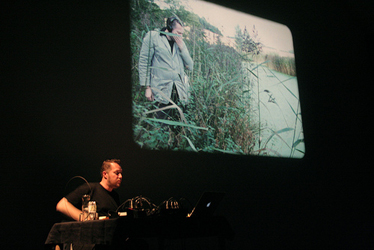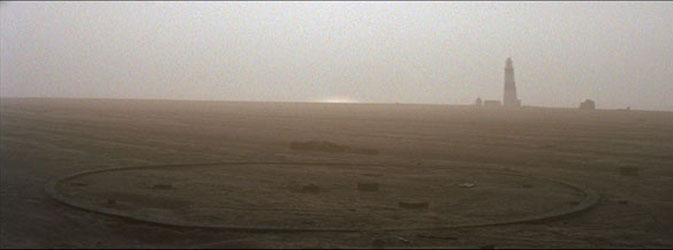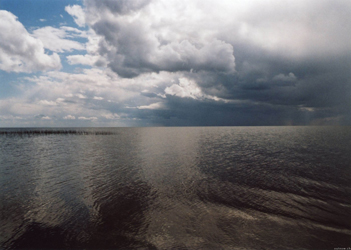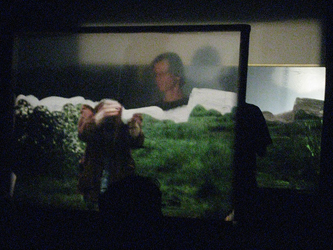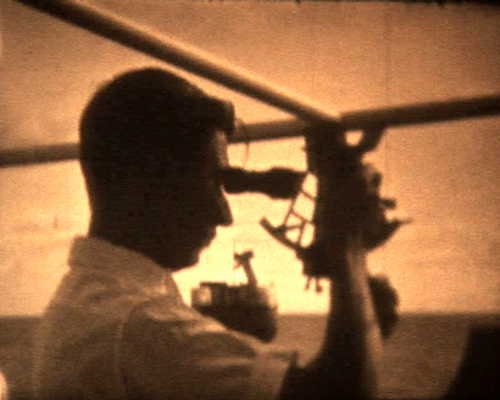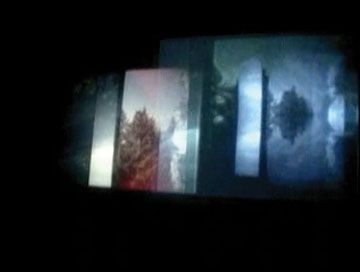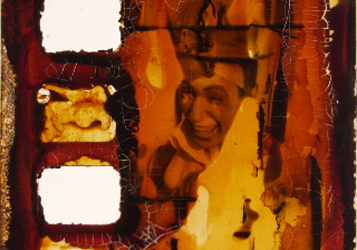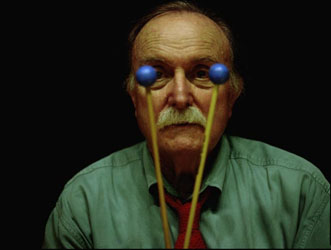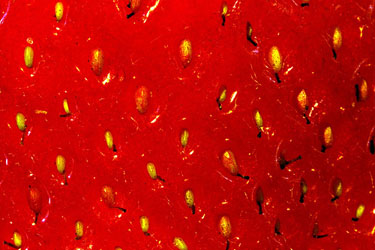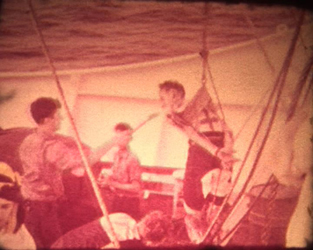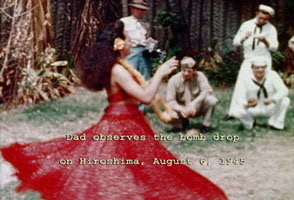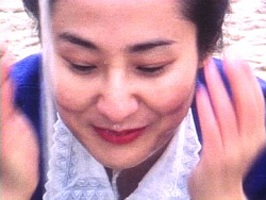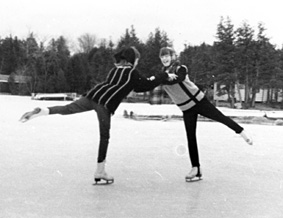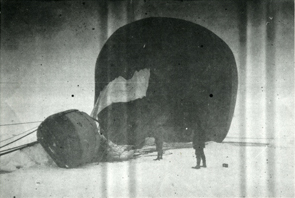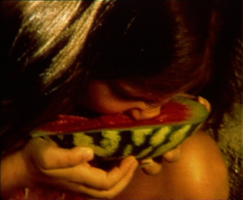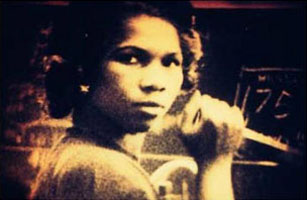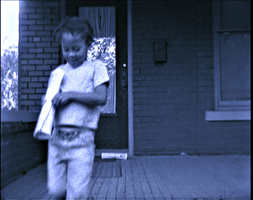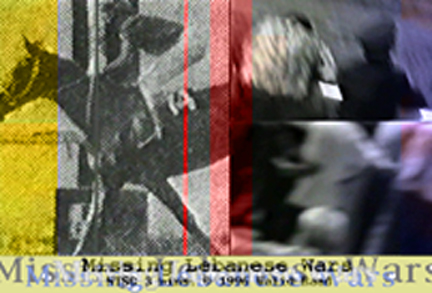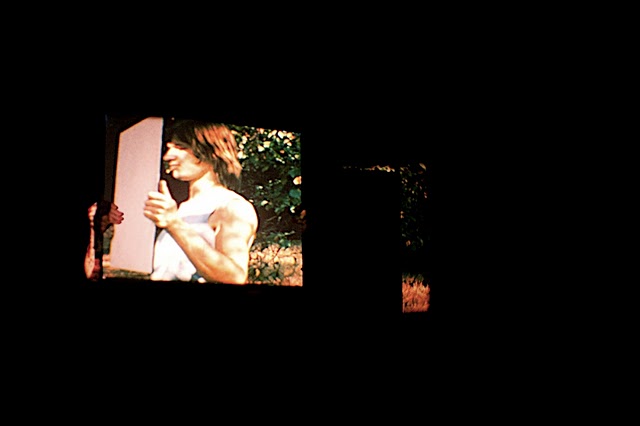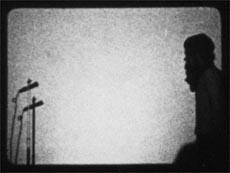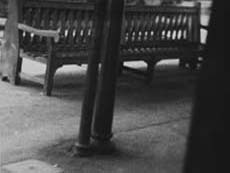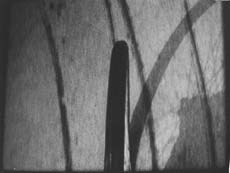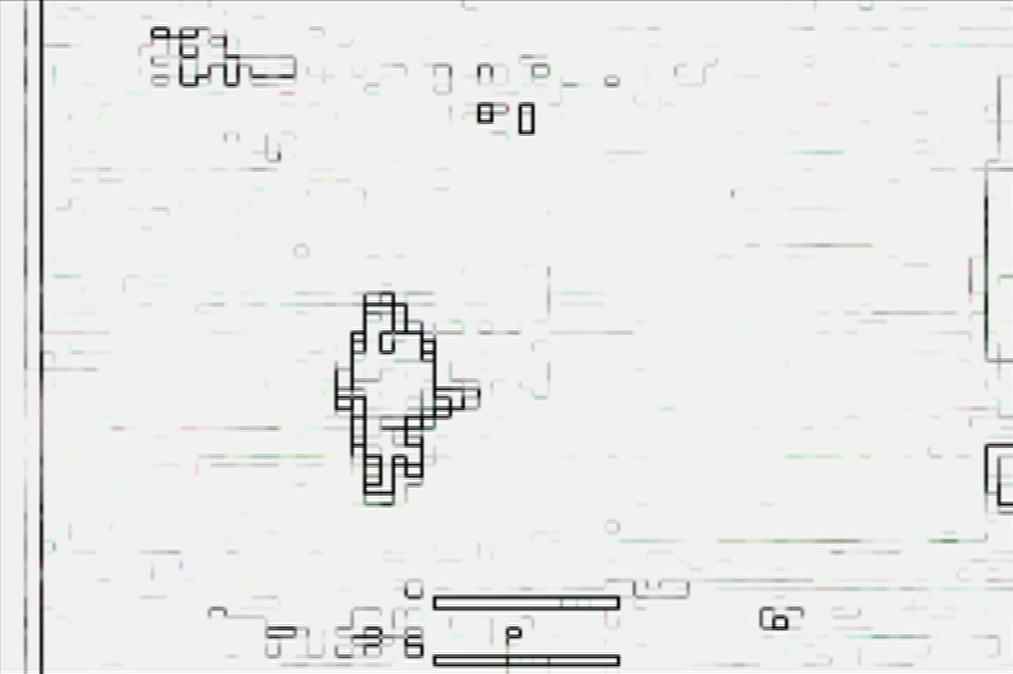
Here’s a transcript of the presentation Maria and I did at the Animation Breakdown conference at Tate Modern on Saturday 21 March. It’s about the Drawn to Life program we showed in November 2008.
Drawn to Life – Reanimating the Animate
Animation Breakdown Study Day, Tate Modern
London, 21.03.2009
(Please note that this is the transcript of a spoken presentation, hence the style)
To begin with, we’d like to thank Gary Thomas, Animate Projects and Tate Modern for having invited us here today to speak about Drawn to Life, a film and video programme which was presented in Brussels in November 2008.
Drawn to Life was a project that we conceived as collaboration between Courtisane, the Ghent-based festival and collective of curators we are both part of, and Atelier Graphoui, a Brussels animation studio. Although Atelier Graphoui originally started as a specifically animation studio (founding for instance the Brussels Animation Film Festival), it now produces a large number of live-action documentary projects. Consequently for the past years, the relationship between animation and documentary film has been at the centre of their projects and concerns. Even more so as many of Graphoui’s animation films, produced in the context of workshops with children or adults all over the world, can in fact be seen and understood as documentaries about the people, the places and the situations in which they were made. In 2007, Graphoui decided to launch a call for projects called ANIMA DOC which encouraged animators to approach reality in their work and documentary filmmakers to experiment with animation techniques. In order to launch this call, a film screening was organized, which included amongst other works an Animate project, Feeling my Way by Jonathan Hodgson.
Drawn to Life was initially intended as a follow up to the ANIMA DOC screening from 2007, but we quickly realized that what interested us was not the relationship between animation and documentary film, which could after all be regarded as a mere matter of terms and definitions (“what is animation ?”, “what is documentary ?”, and so on…) and which is also a question that now, after to the international success of Waltz with Bashir, does no longer seem taboo, does no longer appear as a contradiction of terms or as in impossible genre in the eyes of the broad public. Other than being provocative (both from the perspective of “cinéma vérité” documentary tradition, and an animation tradition embedded in phantasmagoria), the notion of animated documentary did not appear as fundamentally interesting to us. What interested us and what we wanted to explore in our programme was the more intimate relationship that animation film holds with reality.
It seemed to us that although the focus is generally placed on animation’s unlimited potential to visually represent events, stories, forms that have little or no relation to our experience of the “real” world – or on other words on animation as “illusion” – , animation was precisely the only way to visually represent aspects of the “real” world, of our “reality” which do not belong to the objectively “visible” , such as are recollections, memory, perception, imagination, which shape our experience of reality, of the world around us. That in the words of Canadian animator Pierre Hébert, animation IS reality.
Through our perception, imagination and memory, we constantly re-animate, deform and re-edit our existence. Animation is not only a tool to access all those areas of reality which do not belong to the “visible”, but also the means for individuals to reappropriate their own images, to shape and create those images themselves, in a world in which technological interfaces determine the images we produce of the world and of ourselves, and consequently the images we have of the world and ourselves. Animation as a reappropriation of reality. As a means for artists and filmmakers, but also for any individual, to seize reality.
We think, dream and communicate through images. Images are no longer just representations or interpreters of human actions. The ubiquitous presence of images far exceeds the conventional notion that images are just objects for consumption, play or information. Images are the point of mediation that allows access to a variety of different experiences. Images are the interfaces that structure interactions, people and the environments they share.
The visible, the many phenomena available to sight, is always fragmentary and partial. As a result vision and thought are an engagement with the various pieces that make up perception and subjectivity.
Animation is often regarded (and discarded) as “subjective”. But we mustn’t forget that the images that we have of our existence are never objective. Memory, imagination, perception are subjective too. Animation is therefore a somehow “truer” and more “honest” way to visually render our everyday experiences. To represent experience. It must also be said that the photographic (or real-live) image is no longer a synonym of reality, can no longer be trusted as real.
Today we face a complex reality – no longer possible to represent through the means of “objective” media. For a big part of the 20th century, committed art and literature were identified with “realism”. It was believed that the very existence of events, represented in the most direct way possible was enough to arouse critical awareness. There was a will to represent what was happening in the world with the maximum “objectivity”, eliminating all personal trace. Now that the veil of objectivity has fallen, and that we are more and more aware than any image can be manipulated, that any image can be false, that we do not longer know what a “real” image is, the most “honest” and “real” image is that which doesn’t hide its construction, as it’s the case with animation.
“Photography is no longer evidence for anything” read a 1982 announcement for Lucasfilm, and as an illustration : the case of O.J. Simpson – the subject/object of Kota Ezawa’s video featured in the programme – who was declared innocent of the charges of the murder of his wife and her friend partly because many of the evidence photographs weren’t judged as truthful enough by the jury.
In his book The Illusion of Life Alan Cholodenko writes on the relationship between “cinema”, “animation” and “reality” : “For me, cinema doubled the world , seducing it, drawing it astray, deanimating it (drawing it to its death) and reanimating it (drawing it back to life) as simulation – the world metamorphosed into cinema and cinema into world at the same time, making it impossible to say which is which, coimplicating them inextricably. And for me this doubling was the effect of animation as the animatic, which doubles cinema as doubles the world.”
The films and videos in the Drawn to Life programme are all experiences of life, or what Robert Breer calls “daily seeing”, an attempt to translate the aural and visual experiences of ordinary daily life : there are travel notes and sketches as in Stuart Hilton’s Six Weeks in June or Robert Breer’s Fuji; the account of a life-time as in Frank Mouris’s Frank Film, or of a distant encounter as in Josh Raskin’s I met the Walrus (which re-enacts the meeting of Canadian teenager Jerry Levitan with John Lennon in a Toronto hotel in 1969). There are notes of the everyday as Jonathan Hodgson’s bar sketches in Night Club, or Dirk de Bruyn’s inner monologue in Rote Movie. For its presentation in Brussels we decided to divide the Drawn to Life programme in two parts, two screenings. The full programme can be found online, on Courtisane’s website as well as diagonalthoughts.com. The first screening dealt with personal recollections, memories, notes. With animation as a way to speak of oneself, to visually render one’s reality. Other than the already mentioned works by Frank Mouris, Robert Breer, Jonathan Hodgson, Dirk de Bruyn and Stuart Hilton, this first programme included works by Bob Sabiston and LEV.
The second screening dealt no longer with the self, but with the world around us, with animation as a tool to analyse, understand and comment on current events, history and social organization.
Although most of the works we will show today were originally presented as part of the second screening, the question we wanted to focus on here was not the issue of the self versus the world, but the different levels and layers of relationship to reality in the works.
We’d like to present seven recent short works from our programme. We will start with Capitalism-Slavery by the great Ken Jacobs, a work in which the photographic image or “reality” referent is still present on a first degree. But it is through animation – image by image movement – that the stereographic images are brought back to life. Here we can really speak of animation as re-animation, in the sense of “animare” (Latin) : filling with breath, bedowing with life.
SHOW :
Ken Jacobs
Capitalism : slavery
US, 2007, video, b/w, silent, 3′

We wanted to start with this work because it’s also representative of the larger frame in which we consider/place animation film, which is also close to the understanding of animation at Animate Projects, challenging the notion of what is and what is not animation in terms of both content and technique. But without entering on a debate on what is animation, and what isn’t, and whether all cinema is animation- which could indeed be argued, and which we do believe – , in the case of Ken Jacobs it’s interesting to consider his work, and more precisely his Nervous System works , which are basically increments of time and space, in terms of animation and further more so, in terms of reanimation. Jacobs acts as a cine-puppeteer, bringing back to life long-forgotten archival images, like it’s the case here and in many of his recent video work, or films like the classic Tom Tom the Piper’s son, which is also the object of two other recent long-feature works : Return to the Scene of the Crime and Anaglyph Tom. “There’s already so much film. Let’s draw some of it out for a deeper look, toy with it, take it into a new light with inventive and expressive projection.”
Other works, like Kota Ezawa’s The Simpson Verdict, Stephen Andrews The Quick and the Dead and Bob Sabiston’s Snack and Drink also hold an indexical relation to the “real-live” image, although in these three cases there are extra layers (or masks) of animation and mediation, which translate another aspect of the reality portrayed.
Bob Sabiston is mostly known for his collaborations with Richard Linklater in works such as A Scanner Darkly and Waking Life and Lars Von Trier in The Five Obstructions, in which he uses his rotoshop software which he invented in order to make rotoscoping – manually tracing and redrawing existing images – possible for artists working on video. Live-action footage is converted to digital files and then drawn over using the software. It’s a technique that destabilises the commonly held boundaries between live action and animation. A common theme in Sabiston’s films is how everyday reality is far more complex and multilayered than it first appears. At their core, we find an interest in drawing out the dilemmas and downright oddness of human experience. Rotoshop aesthetic – shimmering, mutable, shape-shifting – is the perfect way to render such a protean take on reality. It’s an expressive vehicle for portraying the eerie and uncanny elements of what we take for reality. “The software has become a tool for blurring the lines between reality and the imagined”.
For Drawn to Life, we decided to show Snack and Drink, which is part of a series of documentary shorts produced by Flat Black Films. It stars Ryan Power, an autistic teenager in Austin, Texas, obsessed with cartoons. Ryan’s mother thought it would be interesting for him to see himself as a cartoon. Apparently, when he saw the completed animation he watched it three times in a row and declared it “pretty ok”.
SHOW :
Bob Sabiston
Snack and Drink
US, 1999, video, colour, sound, 3’40
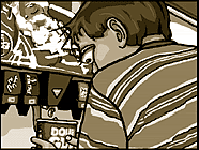
With digital technology and the proliferation of CGI, images no longer bear witness to reality in the same way envisioned by theorists such as Andre Bazin. The digital rotoscoping technique employed by Bob Sabiston demonstrates this split between reality and image, this loss of indexicality in part by preserving the real beneath an entirely created artistic surface. Its not a coincidence that rotoscoping has been used for military training films, where the complexities of dealing with ordnance where made clearer via the tracing of live action footage. A fundamental characteristic: it makes things simpler. In a strange way it reveals more of “the real” than the apparently real photographic imagery that acts as its basis. It renders more precisely what was already visible; it takes us beneath the phenomenal surface and reveals something of the real relations underpinning things. It blurs – literally covers over – but also makes things clearer.
Autism : “the absorption in self-centered subjective mental activity, especially when accompanied by marked withdrawal from reality” appears as a particularly appropriate subject for Bob Sabiston’s animation technique. The dreamlike and fractured nature of his images match Ryan’s dialogue and are an interpretation of his perception of reality perhaps much more accurate, and in any case more expressive, than a live-action video interview would be. They somehow tell us more about him.
Unlike Sabiston, Kota Ezawa and Stephen Andrews do not intervene on live-action images, but try to reproduce them. Whereas Stephen Andrews intends to manually recreate with his drawings the “perfectness” of the technological video image, Kota Ezawa reduces it to its essence.
Kota Ezawa’s video work, a cross between found footage ready-made and animation, reconsiders images from art history and popular culture. He describes his practice as a sort of “video archaeology”. Using basic digital drawing and animation software, Ezawa draws all the figures, their hands, their eyes and recreates all the motions, trying to simulate the motions of the people in the videos. He works almost as if it were paper cut-out animation, but with the computer. The result is highly stylized, but Ezawa considers it an honest effort at translation. He says “stylization can transform an image from a means of representation to a direct solicitation of a viewer’s emotions”.
SHOW :
Kota Ezawa
The Simpson Verdict
GE/US, 2002, video, colour, sound, 3′
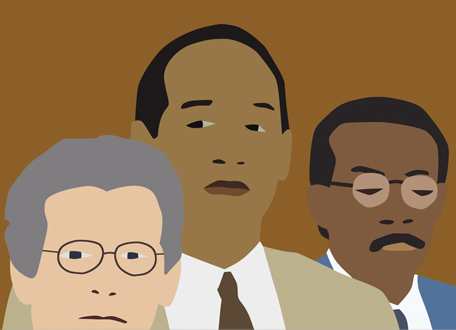
Ezawa says he’s attracted to animation for what he calls its “constructed” nature. In The Simpson Verdict, Ezawa’s reimaging of the events privileges and exaggerates the slight yet revealing gestures of Simpson and his legal team as they anticipate and learn his fate. In that sense, one could say that the Simpson Verdict has the quality of a silent film, as our attention is largely focused on the character’s actions. The turn of the head, the raising of an eyebrow, the shifty movement of Simpson’s eyes serve to intensify the human drama. The Simpson Verdict condenses history to a compelling narrative conjured from a series of nervous gestures and tics.
Because he reduces events to their essence, Ezawa says that he feels that “the imagery that is (his) animation is hyper-recognizable, in a way more recognizable than the original. It seems like a contradiction”. In other words, more “real” that the “real”, trial video.
In Stephen Andrews’ s The Quick and the Dead, a short Internet clip is broken down into its component frames and meticulously re-drawn in coloured crayons rubbed over a window- screen, reproducing the effect of a half-tone print. 600 drawings that took months to make, for a one-minute film. The original footage, which depicts an American soldier nonchalantly stepping over a dead Iraqi man to extinguish burning wreckage, is thereby transformed into a silent meditation on the inhumanity of war.
SHOW :
Stephen Andrews
The Quick and the Dead
CA, 2004, video, color, sound, 1’30”
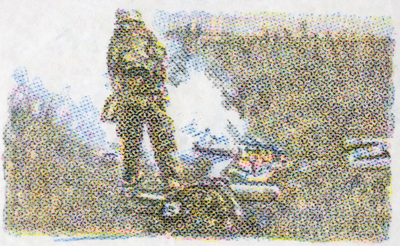
Through his process of aestheticising, Andrews argues that his drawings “slow down” the gaze, allowing the viewer to contemplate what is occurring without feeling the urge to turn away. He says: “By directing our gaze to the dots that make up the pictures, I hope to interrogate the technological interface that delivers the message, to reveal through formal means the role that technology plays in constructing meaning.”
Another example of recreation of live-action footage, but this time in 3-d animation is Karl Tebbe’s Infinite Justice, a piece in which fragments from German TV news broadcasts are reconstructed frame by frame with “action figures” sold in the USA.. This video constitutes a very simple, but highly effective expression of disgust towards the excesses in Iraq of the Bush years and interrogates the public image (and image experience) of a war, which was in essence a television war, produced as a soap series in which news announcements became trailers, content was delivered in daily episodes, and the show was perpetuated by a number of film sequels and video games. “This isn’t Disney. Not Team America. This is war”.
SHOW :
Karl Tebbe
Infinite Justice
GE, 2006, video, colour, sound, 2′
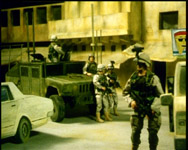
Interestingly enough, Infinite Justice has been presented at both animation film festivals (in animation’s most classical sense) and documentary events such as IDFA.
The works we have just seen, Ezawa’s, Tebbe’s and Andrews re-create the live-action image in order to analyse it, to decode it, to reduce it to its essence.
There were other works in the programme, such as Paul Glabicki’s Diagram Film which took the “decoding” even further. In this 1978 film, live-action and still images of objects are presented and then followed by animated diagrams that transform, explain or re-interpret what we have just seeing. Glabicki’s work is driven by an obsessive inclination towards analysing his own experiences, encoding layers of meaning and representation and dissecting the relationship of parts to the whole. For Glablicki, one single image or object can generate an endless chain of new images, relationships, memories, experiences and associations. And all these extra levels of information are a good example of information (or “reality”) which cannot be visualized by means of so-called objective media, but can be through animation.
Unfortunately Paul Glabicki’s film was a bit too long to be presented here today. Instead we will show another visually-close work from the programme, Jonathon Kirk’s I’ve got a guy running (2006).
SHOW :
Jonathon Kirk
I’ve got a guy running
US, 2006, video, b/w, sound, 7’12”
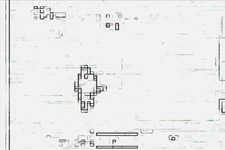
Jonathon Kirk is a young American musician and PhD researcher in music theory. For this video, he subjected images of a precision bombing released by the US Department of Defense to an interactive edge-detection algorithm, which gradually reveals the reality that lies beneath them.
By digitally processing the original video and audio, Kirk explores the contention that the nature of war is becoming a purely visual perception. Since the first Gulf War images appeared in the international media, it has become extremely difficult to make a distinction between “real” war images and computer-generated ones. Simulation, media distortion, simultaneity and the emergency of high-speed, ephemeral technologies have permanently changed the experience of the horrors of war (except, of course, for those who are its direct victims).
Another work on the perception of war images (but this time WWI) is Paths of G by Austrian artist and architect Dietmar Offenhuber, which is a variation on Stanley Kubrick’s Paths of Glory.
SHOW :
Dietmar Offenhuber
paths of g
AU, 2006, video, colour, sound, 1′

Reducing the long backward tracking shot to its essentials (the path of the camera and the geometrical relations of the set), Paths of g takes Kubrick’s denunciation of the absurdity of war to its logical conclusion. The radical reduction of the scenery underscores the dehumanization inherent in the death machinery of war. In a sense, this reduction is closer to the first industrialized war in history than the images in Kubrick’s film. The new form reveals content which is more important to the image’s rhetoric. In a way, we can say that the spectator sees less, but learns more.
Belgian Curator Edwin Carels asks in his introductory essay for the programme “Not Done” for the Holland Animation festival : “Why does a medium in which virtually anything is possible, in which the imagination has free reign and the laws of physics don’t apply, so rarely shock its viewers?”. That ability to shock, to surprise and yet be true to reality, is – we believe – present in all the works in the Drawn to Life programme. The videos that we have seen here today (as well as those that were screened in Brussels in November) all attempt to revitalize perception, at the same time that they push and dismantle the limits of cinematographic codes and genres. They propose new relations between representation and the world, between information and dream, between the maker and the spectator. They remind us how animation can redefine the everyday, subvert our accepted notions of reality and challenge how we understand our existence.
To end, we’d like to recall a sentence from Michelangelo Antonioni’s Par-delà les nuages that inspired us while putting Drawn to Life together and that somehow summarizes some of the ideas we have exposed here today : “We know that behind every image revealed there is another image more faithful to reality and that in the back of that image there is another, and yet another behind the last one, and so on, up to the true image of that absolute, mysterious reality that no one will ever see”. And we’d like to add : that mysterious absolute reality is precisely what animation alone can reveal to us.
Thank you.
Stoffel Debuysere and María Palacios Cruz

